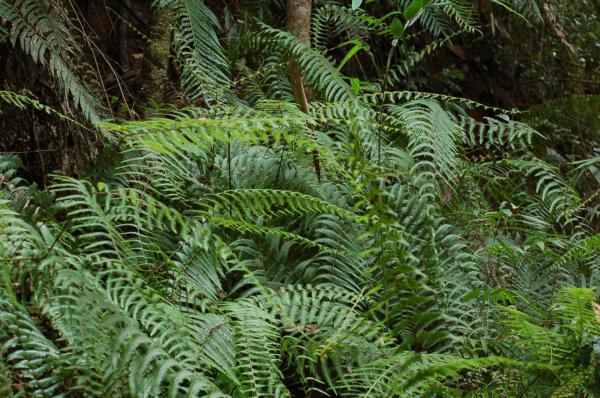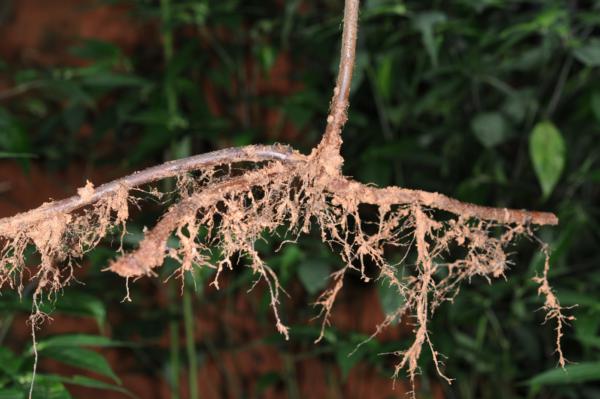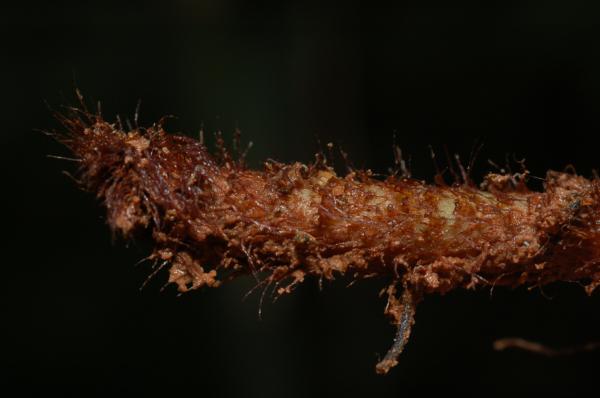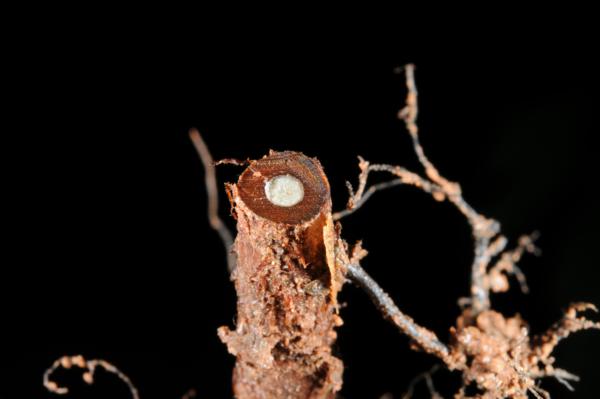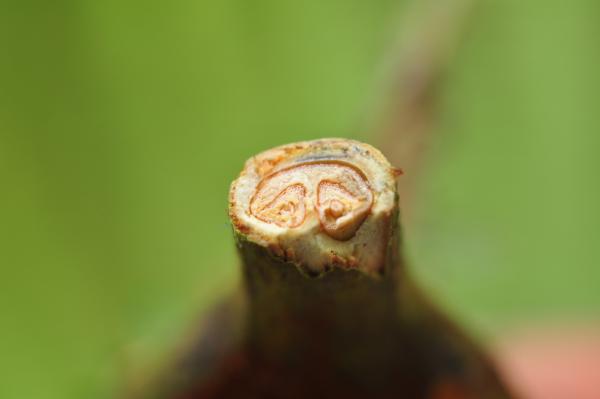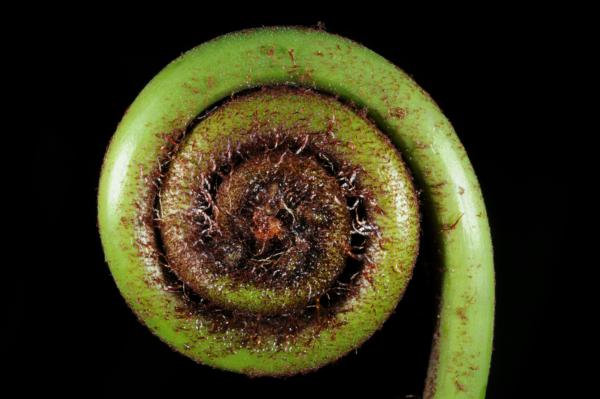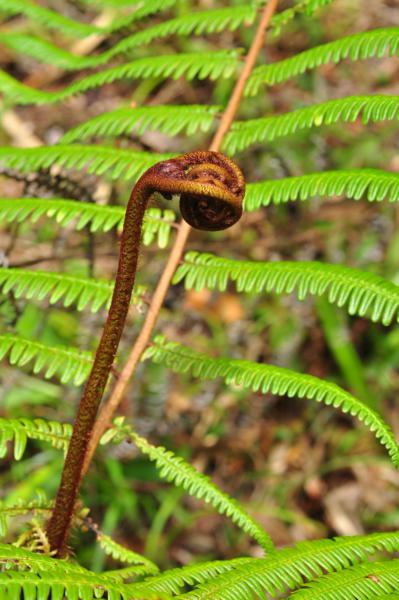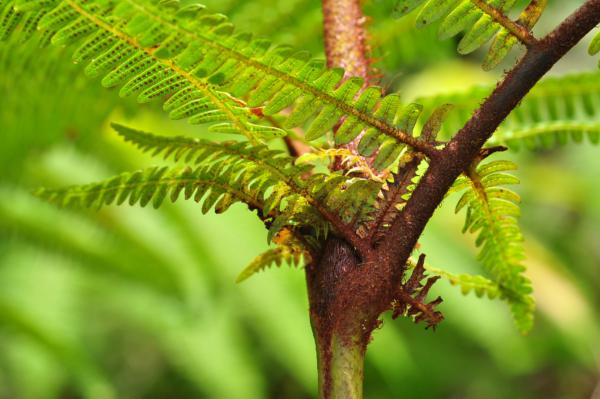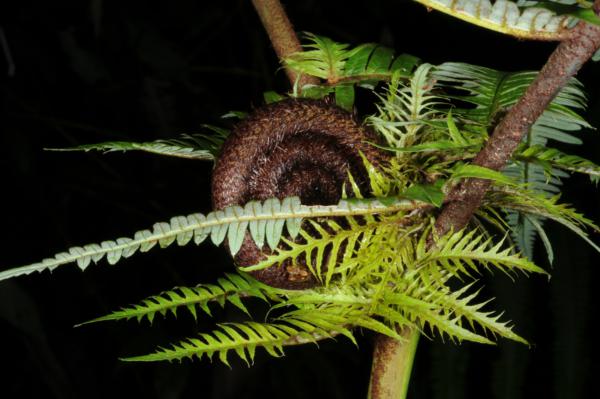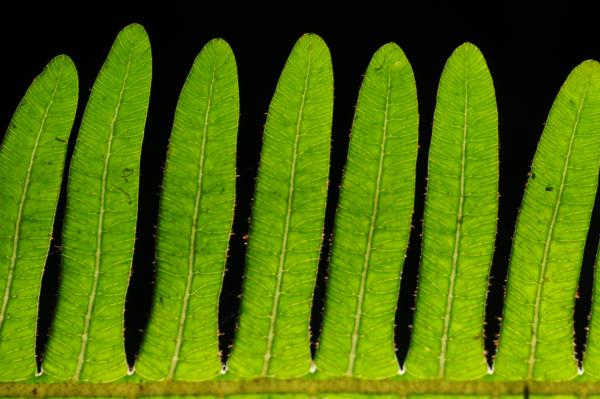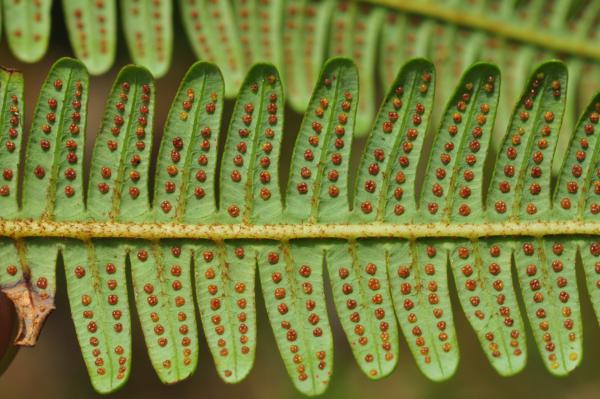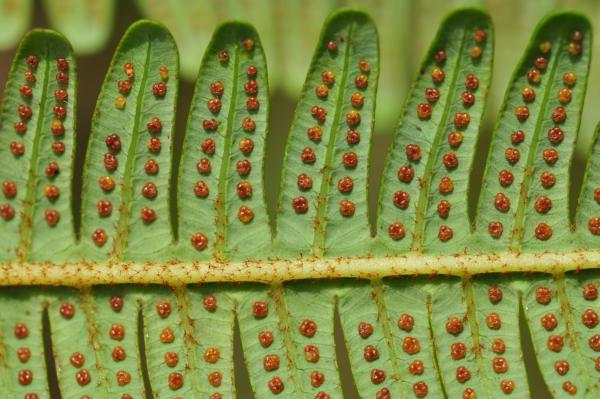
Diplopterygium blotianum (C.Chr.) Nakai
Family
Gleicheniaceae
Nomenclature
Diplopterygium blotianum (C.Chr.) Nakai, Bull. Natl. Sci. Mus. 29: 49. 1950. – Gleichenia blotiana C.Chr., Bull. Mus. Natl. Hist. Nat., Ser. 2, 6: 103. 1934; Tardieu & C.Chr., Fl. Indo-Chine 7(2): 48, f. 7.1. 1939; Holttum, Fl. Males., Ser. II, Pterid. 1: 17. 1959; Holttum, Rev. Fl. Malaya, ed. 2, 2: 630. 1968; Tagawa & K.Iwats., Fl. Thailand 3: 52, f. 4.4–4.9. 1979; Boonkerd & Pollawatn, Pterid. Thailand: 80. 2000. – Hicriopteris blotiana (C.Chr.) Ching, Sunyatsenia 5: 279. 1940; Fl. Reipubl. Popularis Sin. 2: 124. 1959.
Gleichenia norrisii auct. non Mett. ex Kuhn: Tagawa & K.Iwats., SouthE. Asian Stud. 5: 35. 1967, p.p.
Description
Description from Holttum, Fl. Males., Ser. II, Pterid. 1: 17. 1959.Terrestrial. Rhizome dichotomously branched, near the apex protected by peltate scales. Fronds of mature plants usually with indefinite growth in length, bearing primary branches in pairs. Scales on dormant apex of rachis nearly black, edges bearing oblique black setae; scales on growing main rachis usually with a paler median band; rachis-branches when young bearing many dark stellate hairs with rigid rays (so close that hairs touch each other but do not completely obscure surface of rachis) and also very narrow ciliate scales 2 mm long and some long lax multicellular hairs; a similar indumentum on upper surface of costae at first, later deciduous; indumentum on lower surface of costae and costules mostly of dark rigid stellate hairs, with a few scales at bases of costae; dark stellate hairs scattered abundantly on veins and lamina beneath, persistent. Main rachis-branches c. 150 cm long, the lowest pinnules stipule-like, 3.5 cm long, deltoid, with very narrow deeply pinnatifid basal lobes; pinnules commonly 20 cm long, 3–4 cm wide, the base of the costa distinctly deflexed; costae 4–5 cm apart, costules c. 5 mm apart; segments of lamina 3.5–4 mm wide, rather thin, their apices broadly rounded and sometimes retuse; veins distinctly raised on upper surface and slightly so below; sporangia 3–4 in each sorus .
Distribution in Thailand
NORTH-EASTERN: Loei; PENINSULAR: Nakhon Si Thammarat.
Distribution in Laos
Xieng Khouang.
Distribution in Cambodia
Kampot
Wider Distribution
South China to Taiwan, Indochina and Peninsular Malaysia.
Ecology
Along streams in dense evergreen forest at about 1200 m alt.
Proposed IUCN Conservation Assessment
Least Concern (LC). This species is widespread and not under any known threat.
Voucher specimens - Thailand
Middleton et al. 5122, Loei, Phu Suan Sai National Park (E); Middleton et al. 5502, Nakhon Si Thammarat, Khao Ram Rom (E).
Habit
Rhizome
Scales on rhizome
Cross section through rhizome
Cross section through stipe
Crozier
Unfurling frond
Node within frond with stipule-like leaflets
Node within frond with stipule-like leaflets
Upper surface of lamina
Lower surface of lamina
Sori
Site hosted by the Royal Botanic Garden Edinburgh. Content managed by Stuart Lindsay, Gardens by the Bay, Singapore and David Middleton, Singapore Botanic Gardens. Last updated 24 January 2012
